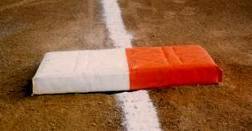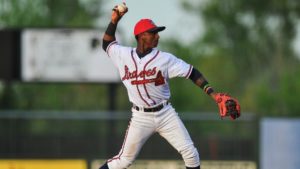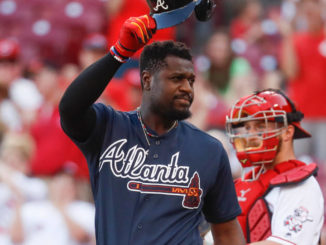Answers On The Fly: A Reader Mailbag
Welcome to Answers On The Fly. Answers On The Fly is our reader mailbag feature in which our writers give insight into questions fans are asking. After a lengthy absence due to real world happenings, the feature has returned to its regular weekly spot. Fans from all over the Greater Metropolitan Decatur, GA area anticipating the return have submitted questions that they want our armchair GMs to answer.
Submit your questions the following ways:
- Email us
- Tweet us (@OFRSports)
- Post them in the Outfield Fly Rule Facebook group.
Now, on to the questions.
After Albies comes up and gets settled in, the Braves will have three players who are prototypical number one or number two hitters (Inciarte, Albies, and Swanson). What are the odds that the Braves move Freeman down to cleanup and let Swanson hit third at some point. The logic of the move is that while Swanson may not have the power of the average #3 hitters, Freeman is one of the slowest #3 hitters in the league. – Bob S.
Andy Harris: I’m going to answer this in two ways. The first is what I think the Braves would do in this situation and then what I would do.
Of the three, Albies is most likely to be the lead-off man going forward. He’ll hit low in the order to start with like Swanson did, but I suspect he’ll make his way to the top before too long. He’s going to be a better hitter than Inciarte, he’ll get on base more, he’s faster, and he has the added advantage of being a switch-hitter. Swanson will be the #2 hitter, and hopefully be there for the next 10 seasons or so. Inciarte has had three major league seasons with remarkably similar stat lines, so I think it’s safe to say that this what he his going forward. If he can get on base at a .351 clip like he did last season for his career high he’s not a terrible option at #1, but long-term he’ll settle in the lower part of the order; my preference would be to put him #6. I don’t think the Braves will move Freeman out of the #3 spot for anything, at least as long as Brian Snitker is manager.
Now here’s what I would do once the Braves decide to end the Brandon Phillips era…
- Ozzie Albies 2B
- Dansby Swanson SS
- Nick Markakis RF
- Freddie Freeman 1B
- Matt Kemp LF
- Ender Inciarte CF
- Tyler Flowers/Kurt Suzuki C
- Rio Ruiz/Adonis Garcia 3B
This line-up is based on the extensive sabermetric research done by Tom Tango, Mitchel Lichtman, and Andy Dolphin in The Book: Playing the Percentages in Baseball, and summarized in this Beyond the Box Score article by Sky Kalkman. This research revolutionized the way analytically inclined baseball people think about line-up construction (and these days every baseball front office is analytically inclined). However, this analysis has been slow to seep to the folks that actually make up the line-up cards, the managers. But it has started. That is why now it’s starting to get customary for teams to bat their best all-round hitter #2 instead of #3 (to get him more plate appearances in a game and over the course of a season), or why the primary requirement for lead-0ff hitter these days isn’t being a track star (one thing Fredi Gonzalez got right in 2015 was batting Nick Markakis lead-off).
Do you ever see MLB going to the double first base that’s used in fast-pitch softball? – Brian D.

Andy Harris: It’s an idea obvious and common-sensical, but there has been absolutely no apparent discussion about adopting it or any other suggestion of better bag safety from the rules committee, the commissioner’s office, or the player’s union.
For those that are unaware, the double first base or “safety bag” is a base that is double the width of a normal base, and half of the base lies in fair territory, and half in foul. The runner down the line owns the foul side of the bag, the fielder the fair. The purpose of course is to help prevent injures caused when the runner’s foot comes down on a fielder’s foot or ankle (or vice versa), such as the horrible incident with Tim Hudson covering the bag against then Met Eric Young Jr. in 2013.
In general, the bases have been anything but safe the last several years. Unlike the original cloth or burlap bases, modern bases are made of hardened rubber and are anchored tightly to the ground. The bases generally start the season slick as well, which is why you will often see fielders and baserunners rub dirt on them. The lack of give with the bases has caused an small epidemic of thumb, hand, ankle, and knee injuries.
But despite some injuries to some of the biggest stars in the game, there’s been no talk of modifying any base. If injuries to players like Manny Machado, who once blew out a knee just coming down hard on first base, won’t cause the baseball establishment to take a look at bases, I’m not sure what will. Maybe Buster Posey will have to get hurt blocking first base.
Is Brandon Phillips going to block Ozzie Albies from the majors? – Andy W., Watkinsville, GA.

Andy Harris: Ozzie’s a popular guy. It’s funny you should ask, because Braves GM John Coppolella just today was quoted as bluntly saying “no one is going to block Ozzie Albies.” That said, by Albies’ own admission, he’s only at about 80% health and likely won’t be cleared for game action until a couple weeks before the end of spring training. While I was reasonably certain that Albies could be able to win the second base job a few weeks ago, that was with the last word being that he was “ahead of schedule” on his rehab from the broken elbow that he sustained during the Mississippi Braves playoff run. Now it seems certain that Albies will be ticketed to AAA Gwinnett with Phillips opening up the schedule at Citi Field in New York.
The thought that Albies could win the second base job outright was also before the very unfortunate news about Sean Rodriguez‘s shoulder and the likelihood that he will miss significant time, possibly the entire 2017 season. While Rodriguez was likely penciled in to be the starter at second base, his ability to play anywhere actually worked to Albies’ favor; if Albies showed he was ready to start in Atlanta, Rodriguez could simply play third base or the outfield. While in his prime Phillips could be pressed into shortstop duty, at age 35 and coming off his worst defensive season by advanced defensive metrics, he’s strictly a second baseman at this point. If Albies shows he’s ready, Phillips would not be an ideal bench candidate.
The best possible scenario of course would be for both Phillips to play well in Atlanta and Albies likewise in Gwinnett. If Albies proves he’s ready to move up, a productive Phillips could command something worthwhile in a trade, and at only a $1 million price tag thanks to the favorable trade terms the Braves got with Cincinnati when acquiring Phillips, salary won’t be an impediment.
If Phillips does decline however, that same $1 million salary won’t be an impediment to simply releasing him and calling up Albies if Albies shows he’s ready. In the end, kudos to John Coppolella for making wine out of vinegar in what could have been a very bad situation with Sean Rodriguez.





Leave a Reply